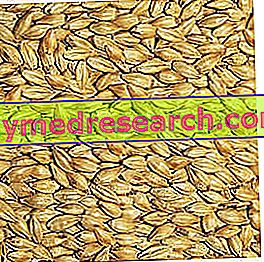Importance of Meiosis
Within a multicellular organism it is necessary that all cells (not to recognize each other as foreign) have the same hereditary heritage. This is achieved by mitosis, dividing the chromosomes between the daughter cells, in which the equality of genetic information is ensured by the DNA reduplication mechanism, in a cellular continuity that goes from the zygote to the last cells of the body, in what it is called the somatic line of cellular generations.
If, however, the same mechanism was adopted in the generation of descendants, the whole species would tend to be composed of genetically equal individuals. Such a lack of genetic variability could easily jeopardize the survival of the species by changing environmental conditions. Therefore it is necessary that the species, in the context of the variability of the genetic material that it admits, may give rise to a reassortment, a mixing, not within the single organism, but in the passage from one generation to another. The phenomena of sexuality and the particular mechanism of cell division called meiosis provide this.

What is meiosis
Meiosis occurs only in germ line cells . When a long series of mitotic divisions has sufficiently multiplied the number of germ cells available, the latter enter meiosis, thus preparing the gametes. The gametes, merging in fertilization, pool their chromosomal material. If the gametes were diploid, like the other cells of the body, their fusion in the zygote would give children with 4n heritage; these would give children 8n and so on.
To keep the number of chromosomes of the species constant, the gametes must be haploid, that is with number n instead of 2n of chromosomes. This is achieved with meiosis.
Meiosis can be understood as the succession of two mitotic divisions without a reduplication being intercalated.
In each of the two successive divisions, which originate from a diploid germ cell four haploid cells, there is the succession of prophase, metaphase, anaphase, telophase and cytodieresis.
However the prophase of the first meiotic division is particularly complicated, giving rise to a succession of moments that take the respective name of leptotene, zigotene, pachitene, diplotene and diacinesi.
We consider these moments one by one, following the behavior of a single chromosome pair.
Leptotene . It is the beginning of meiosis. The chromosomes begin to be seen, still not very spiraled.
Zigotene . Chromosomes are more clearly identified, and homologous chromosomes are seen to approach. (Remember that the filaments that tend to approach, parallel to each other, are 4: two chromatids for each of the two homologous chromosomes).
Pachitene . The four chromatid filaments adhere to the entire length, exchanging sections with each other, for breaking and welding.
Diplotene . As spiraling and therefore thickening increases, chromosomes tend to take on their separate individuality: with each centromere combining a double strand.
The points where the exchange took place due to breakage and welding (chiasm) still keep the filaments (chromonemes) together in different sections. The four chromonemes, joined in pairs by the centromeres and variously adherent in the chiasms, form the tetrodes.
Diacinese . The tetrads tend to place themselves at the equator of the spindle; the nuclear membrane has disappeared; the separation of the centromeres begins. As this happens, the chromosomes, already joined in the chiasmus, separate.
After the subsequent metaphase the two centromeres (not yet split) migrate to the opposite poles of the spindle.
Anaphase, telophase and cytodierese of the first division follow in rapid succession, and immediately after the second division.
While after the metaphase of the first division the centromeres migrated to the poles of the spindle dragging two filaments, in the second metaphase each centromere splits. The two cells resulting from the first division had received n centromeres with 2n filaments, but their subsequent division gives rise to 4 cells, each with n filaments (ie, at this point, n chromosomes).
This general scheme explains three different and parallel phenomena:
- the reduction of the chromosome set from the diploid (2n) of the organism to the haploid (n) of the gamete.
- The random attribution to the gamete of one or the other chromosome, of maternal or paternal origin.
- The exchange of genetic material between homologous chromosomes of paternal and maternal origin (with mixing of the genetic material, not only at the level of entire chromosomes, but also within the chromosomes themselves).
Edited by: Lorenzo Boscariol



